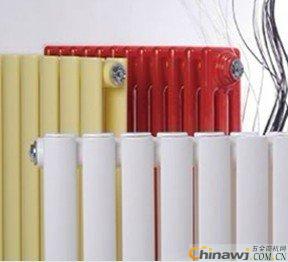Heating Issues in Jinan Radiators
In Jinan, heating systems typically operate under three main temperature conditions: 1) inlet water temperature of 95°C and outlet temperature of 70°C, 2) inlet temperature of 75°C and outlet of 57°C, and 3) inlet of 55°C and outlet of 45°C. The inlet water temperature plays a crucial role in the overall efficiency and performance of the radiator system. Understanding these conditions helps users better manage their heating experience.
Preparation Before Heating
Before the heating season begins, it's essential to conduct a thorough check of the indoor heating system. First, inspect each radiator to ensure they are in good condition and free from damage. Check the valves on the heating system—make sure they are closed and only opened when hot water is being injected. Also, verify that all connections are secure and there are no leaks, which could lead to water loss or even flooding. It’s also important to look for any obstructions that might interfere with heat distribution or require repairs. During the initial water injection, it’s recommended that someone stays at home to monitor the system. If air is trapped in the pipes, manually bleed the radiators to release it and confirm that water is flowing properly.
What to Do if the Radiator Isn't Heating
If a radiator isn’t heating up, first identify which heating unit is responsible for the area. Typically, the building management or the heating company will be accountable. Report the issue to the relevant authority immediately so they can investigate and resolve the problem. In cases where the internal piping is damaged or misaligned, the property owner should take responsibility for repairs and adjustments. Regular maintenance and prompt action can prevent long-term issues.
How to Handle Water Leaks
If you notice a leak, act quickly. Place a container beneath the leak to catch the water. If the water is spreading, use a towel to wrap the affected area and direct the water into the container. If the user has access to the indoor shut-off valve, close it immediately. For older systems with a control valve, turn off the radiator valve promptly. If the radiator doesn’t have a control valve, and the situation is urgent, ask someone to help close the main valve of the building and contact a professional maintenance service right away. Quick response can prevent further damage.
How to Identify Water Seepage
For minor seepage (about 5 drops per minute), use a small container to collect the water. As the system heats up, the seepage may decrease. If the leakage exceeds 10 drops per minute, observe the situation over 3–5 days. If the seepage reduces with temperature changes, continue collecting the water. However, if the leak is severe (more than 10 drops per minute), it’s critical to contact the relevant authorities for immediate repair. Ignoring this can lead to more serious problems.
Can You Use the Water from the Radiator?
The water used in heating systems is usually softened and treated with anti-corrosive chemicals. This makes it unsuitable for drinking or other domestic uses. Using this water can be harmful to health. Moreover, losing water from the system can cause blockages, reduce heating efficiency, and affect the pressure and flow of the entire network. A significant loss of water can even lead to a drop in heating temperature. Therefore, it’s best to avoid using or draining the water from the heating system.

The steel inserts are hardened with a zinc and clear chromate finish. Stainless are type 303. Can be installed with hand installation tools. Optimum hole size to be determined through experimentation. A 60 degrees countersink is required for flush mounting. For use in aluminum, aluminum alloy, magnesium and mild steel.
Carbon Steel Insert,Carbon Steel Key-Locking Thread Insert,Carbon Steel Thread Repair Insert,Heavy Duty Carbon Steel Keensert
Shenyang Helisert Technology Co., Ltd , https://www.helisert.com
